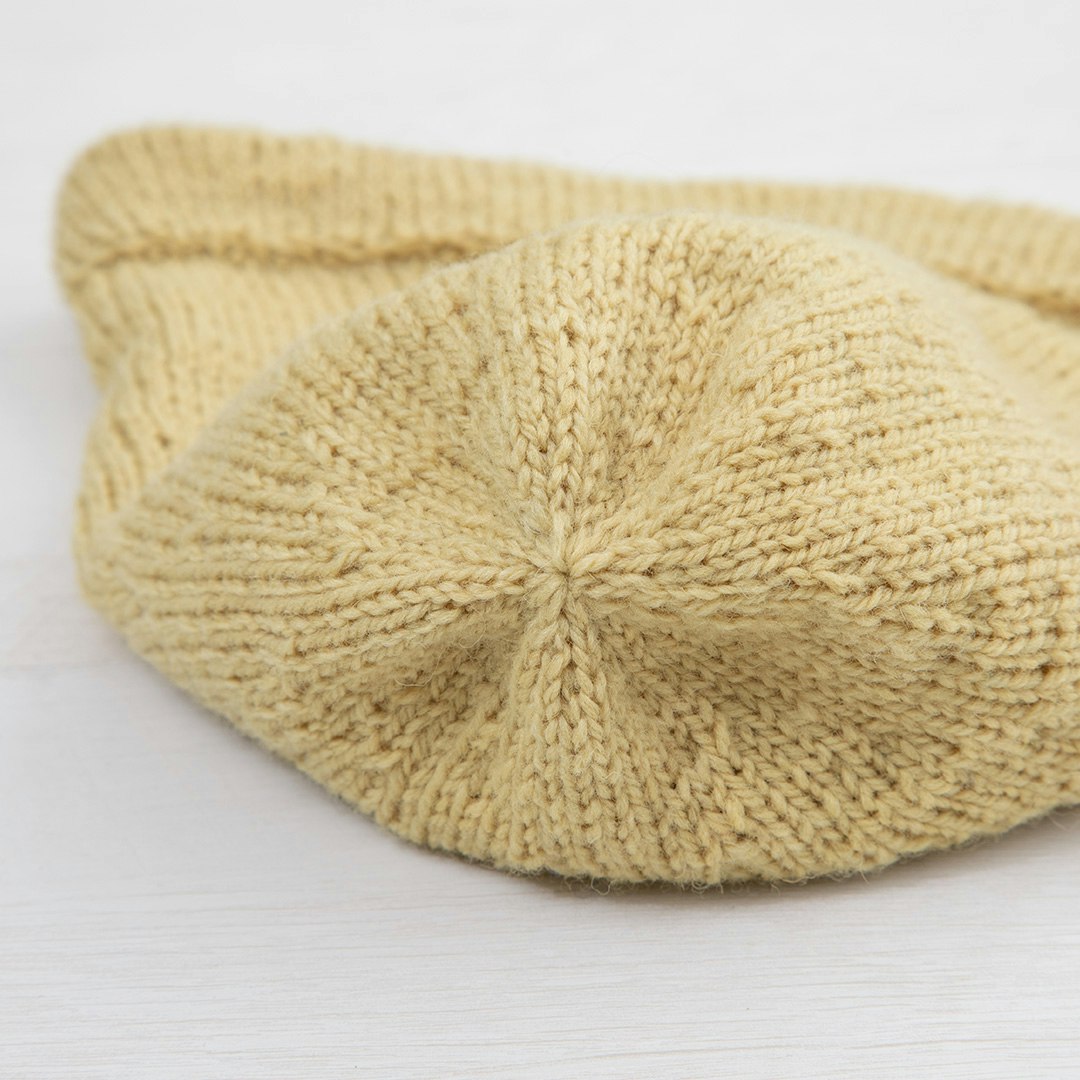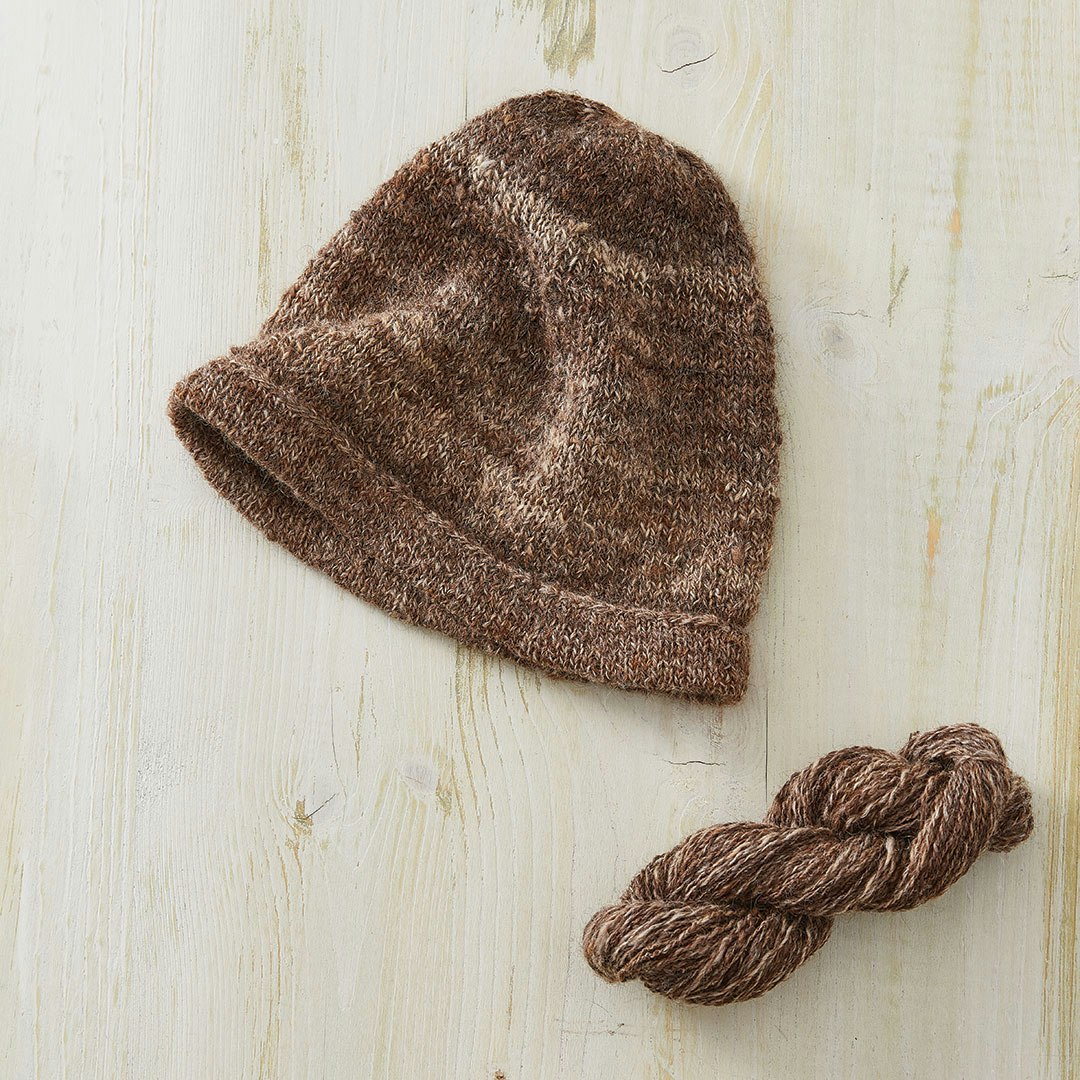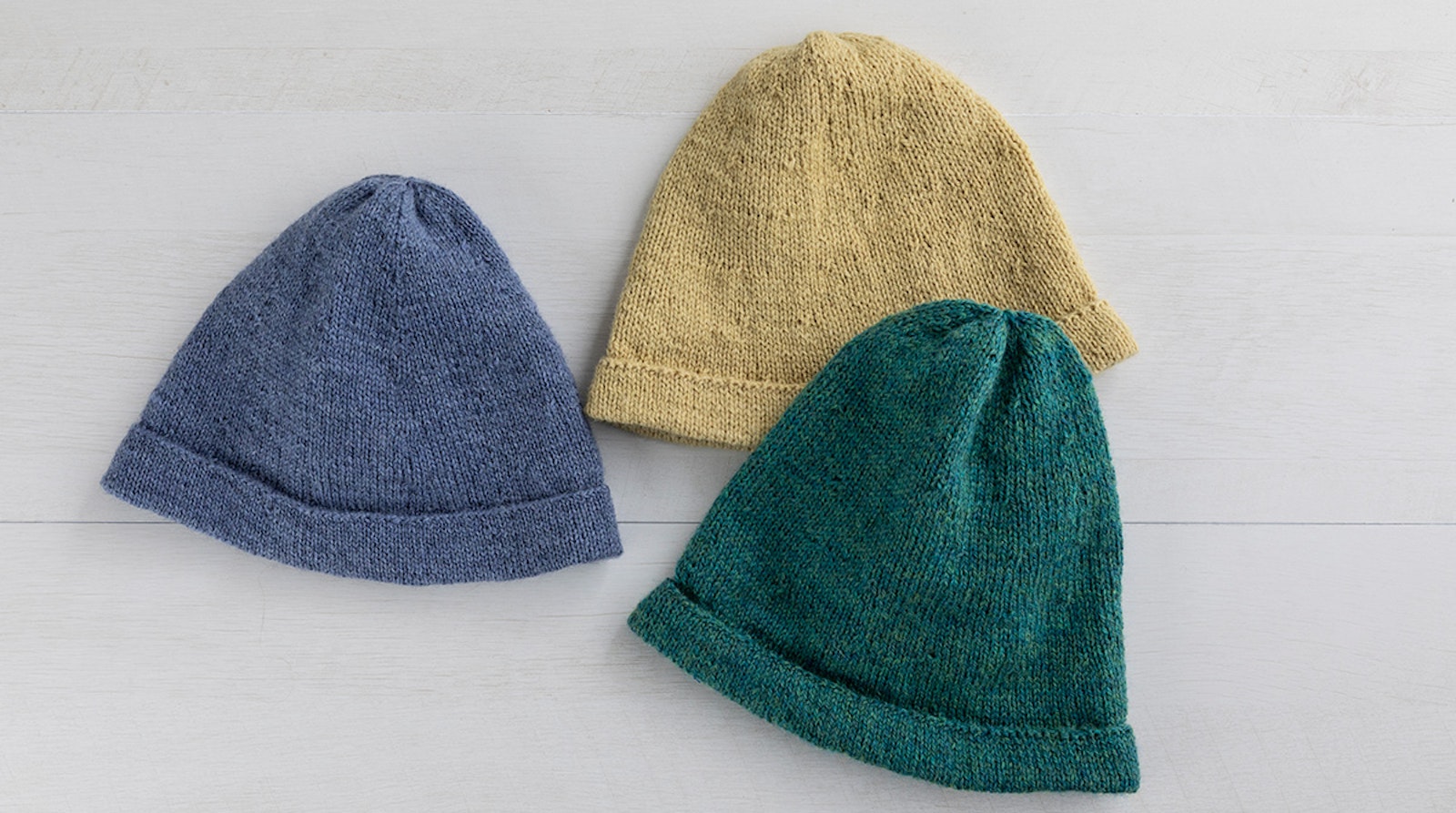Subscriber Exclusive
Knit an Eighteenth-Century “Latrine Hat”
I developed this pattern after close examination of the artifact “latrine” hat excavated at the Fortress of Louisbourg, Nova Scotia, Canada. Log in to reveal this subscriber-exclusive pattern.
I developed this pattern after close examination of the artifact “latrine” hat excavated at the Fortress of Louisbourg, Nova Scotia, Canada. Log in to reveal this subscriber-exclusive pattern. <a href="https://pieceworkmagazine.com/knit-an-eighteenth-century-latrine-hat/">Continue reading.</a>
https://pieceworkmagazine.com/cdn-cgi/image/format=auto/https://www.datocms-assets.com/75076/1656659824-header-latrine-hats.jpg?auto=format&w=900
Estelle Eco Andean yarn suits the latrine hat pattern I developed in a number of ways. Like the original, it is a two-ply wool yarn, and it also has a worsted-spun quality and loft that is similar to handspun. After trying a number of yarns, I found it to be the best commercial yarn option to re-create the look and feel of the original hat.
Over the years I have made a number of latrine hats for the costume department at the Fortress of Louisbourg. Several of the male interpreters wear their hats on a daily basis as part of their costume. The hats shown here will also be worn by one of the staff members in the future. Log in to reveal this subscriber-exclusive pattern. —Editor*
SUBSCRIBER EXCLUSIVE
Estelle Eco Andean yarn suits the latrine hat pattern I developed in a number of ways. Like the original, it is a two-ply wool yarn, and it also has a worsted-spun quality and loft that is similar to handspun. After trying a number of yarns, I found it to be the best commercial yarn option to re-create the look and feel of the original hat.
Over the years I have made a number of latrine hats for the costume department at the Fortress of Louisbourg. Several of the male interpreters wear their hats on a daily basis as part of their costume. The hats shown here will also be worn by one of the staff members in the future. Log in to reveal this subscriber-exclusive pattern. —Editor*
[PAYWALL]
Read more about the hat that inspired this historic re-creation in “The Hat in the Latrine: Unraveling the Secrets of Eighteenth-Century Life in Cape Breton,” PieceWork *Summer 2020.
Materials
- Estelle Yarns Eco Andean DK, 100% Peruvian Highland Wool, DK-weight, 383 yards (350 m)/3.5 ounces (100 gram), 1 skein
- Needles, size 2 (2.75 mm) circ 16 inches (40 cm) and set of double-pointed needles. Adjust size as needed to obtain gauge
- Marker
- Tapestry needle
Finished Size: Blue, Yellow, and Green hats: about 19¼ (21, 23) inches [48.8 (53.6, 58.5) cm] in circumference
Gauge: 25 sts = 4 inches (10.2 cm) in St st
Note: An earlier version of the pattern had incomplete size information. We regret our error. The PDF has been updated, too.

Crown detail of Barbara’s yarrow-dyed latrine hat.
Instructions
Notes: Visit pieceworkmagazine.com/abbreviations/ for terms you don’t know.
This hat is worked in the round from the bottom up.
Hat
CO 120 (132, 144) sts. Place marker (pm) and join in the rnd. Purl 20 (20, 22) rnds.
Dec rnd: Knit, dec 12 (14, 15) sts evenly spaced—108 (118, 129) sts rem.
Knit 8 (10, 10) rnds even.
Dec rnd: Knit, dec 9 (11, 11) sts evenly spaced—99 (107, 118) sts rem.
Knit 9 (9, 11) rnds even.
Dec rnd: Knit, dec 9 (12, 14) sts evenly spaced—90 (95, 104) sts rem.
Knit 9 (9, 13) rnds even.
Dec rnd: Knit, dec 9 (9, 12) sts evenly spaced—81 (86, 92) sts rem.
Knit 7 (8, 10) rnds even.
Dec rnd: Knit, dec 10 (10, 9) sts evenly spaced—71 (76, 83) sts rem.
Knit 6 (6, 8) rnds even.
Dec rnd: Knit, dec 9 sts evenly spaced—62 (67, 74) sts rem.
Knit 6 rnds even.
Dec rnd: Knit, dec 7 (9, 9) sts evenly spaced—55 (58, 65) sts rem.
Knit 4 (4, 3) rnds even.
Dec rnd: Knit, dec 9 sts evenly spaced—46 (49, 56) sts rem.
Knit 3 (4, 3) rnds even.
Dec rnd: *K2tog; rep from * to last 0 (1, 0) st, k0 (1, 0)—23 (25, 28) sts rem.
Knit 1 rnd.
Dec rnd: *K2tog; rep from * to last 1 (1, 0) st, k1 (1, 0)—12 (13, 14) sts rem.
Cut yarn, leaving a 6-inch tail. Thread tail on a tapestry needle and draw through rem sts. Pull tight to gather sts and fasten off on WS.
Finishing
Weave in ends. Fold purled section in half and lightly tack in place on RS.
Download this free pattern.

Barbara's handspun, handknitted version of the hat from a latrine. Photo by George Boe
A Handspun Latrine Hat
I’ve also created handspun versions of this pattern, and I prepared and spun a yarn close to the original hat excavated at the Fortress of Louisbourg.
When washing the fleece for the handspun version of the hat, I tried to keep some of the lanolin. The original hat would likely have been spun in the grease because the lanolin would help the hat maintain a level of waterproofing. Slightly tighter twist in plying might have helped the water stay on the surface of the hat and prevented much from soaking in. Because the hat would have been worn by men who worked outdoors, the waterproof qualities would have certainly made a difference.
Read more about Barbara’s hanspun Latrine Hat in Spin Off Fall 2018.
Barbara Kelly-Landry is a lifelong resident of Cape Breton Island, Nova Scotia. Barbara has been an employee of the Fortress of Louisbourg National Historic Site for the past thirty-six years. She has spent much of it interpreting knitting and spinning traditions of the eighteenth century for visitors to the largest historical reconstruction in North America.



